Emily Lakdawalla • Jan 09, 2019
InSight Update, sols 25-42: Seismometer sensors working!
Tricky setup and cable management on Mars
In the weeks since my last update, InSight has methodically worked through most of the long list of activities required to set up its sensitive seismometer experiment, SEIS. Engineers have leveled the seismometer and worked on cable management. Most significantly for the science mission, they have balanced the Very Broad Band sensors -- 3 of SEIS’ 6 seismic sensors -- and confirmed that they are generating good data. This is a huge milestone and a huge relief for the science team, project scientist Bruce Banerdt told me.
(Thanks to Bruce for an informative phone call yesterday, and to the seismometer team for posting this detailed and informative article about recent work on SEIS placement.)
Over the next couple of weeks, they will complete cable management work and place the wind and thermal shield over the instrument. The mission is still on track to be gathering good-quality science data by February. In the meantime, the science team is already writing up results; they are submitting more than 50 abstracts to the Lunar and Planetary Science Conference, to be held in March. (Most of these will concern environment and weather measurements, but some will be placeholders for future seismometer results.)
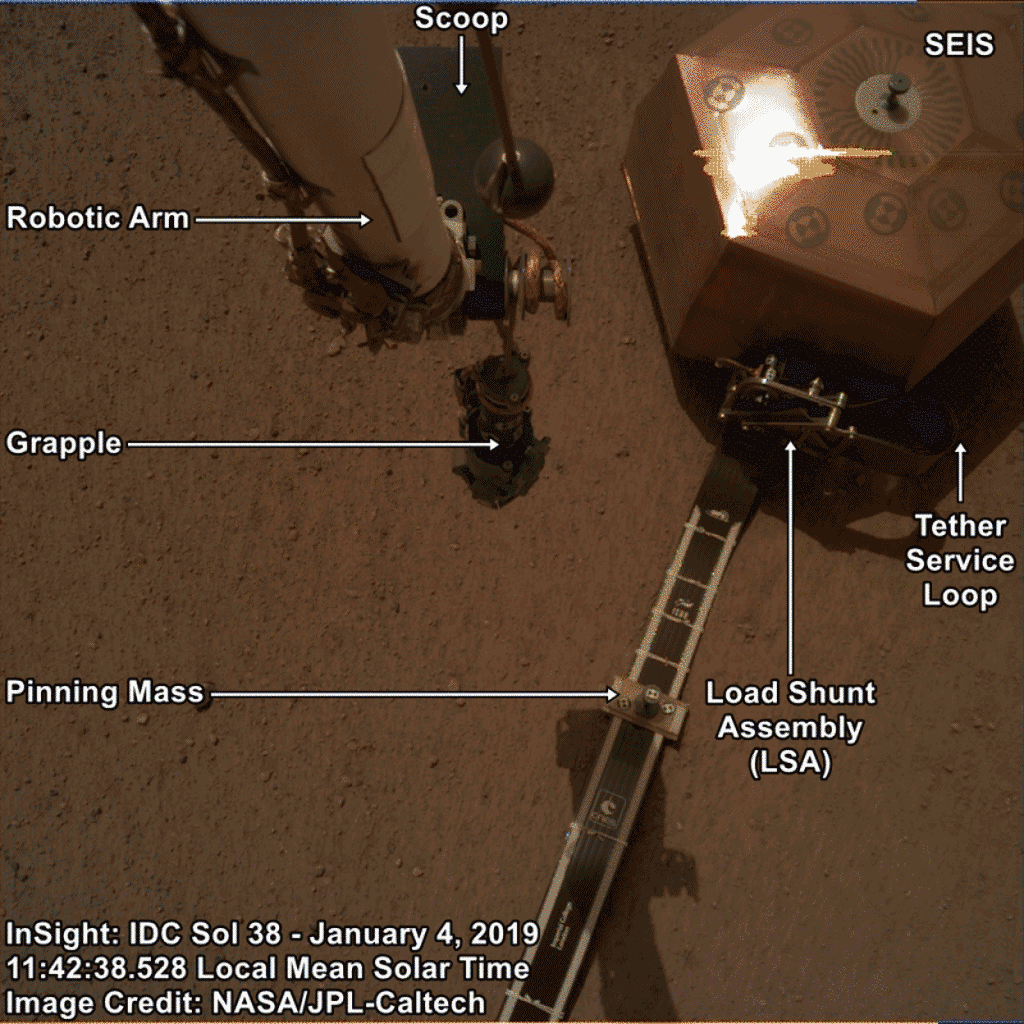
Here’s a play-by-play of the recent InSight activity, since they placed the SEIS instrument on the ground on sol 22.
According to the SEIS team, the first data from the short-period sensors looked extremely good and not very noisy, even with the grapple still attached, on sol 24. Placing it on the ground had dramatically dropped the noise level being detected by the short-period sensors.
On sol 25, the grapple let go of SEIS, leaving it all by itself on the surface. “It was something we’ve been dreaming about. It actually looked kinda lonely out there all by itself,” Bruce told me. “I’m looking forward to getting HP3 [the heat probe instrument] out there and making Mars look a little more populated.”
But that’s getting ahead of ourselves. There’s a surprising amount of work involved in placing an exquisitely sensitive seismometer on another planet. The first step after placement was to level the instrument, which the SEIS team did on sol 30, canceling out the slight, 2.5-degree slope of the workspace.
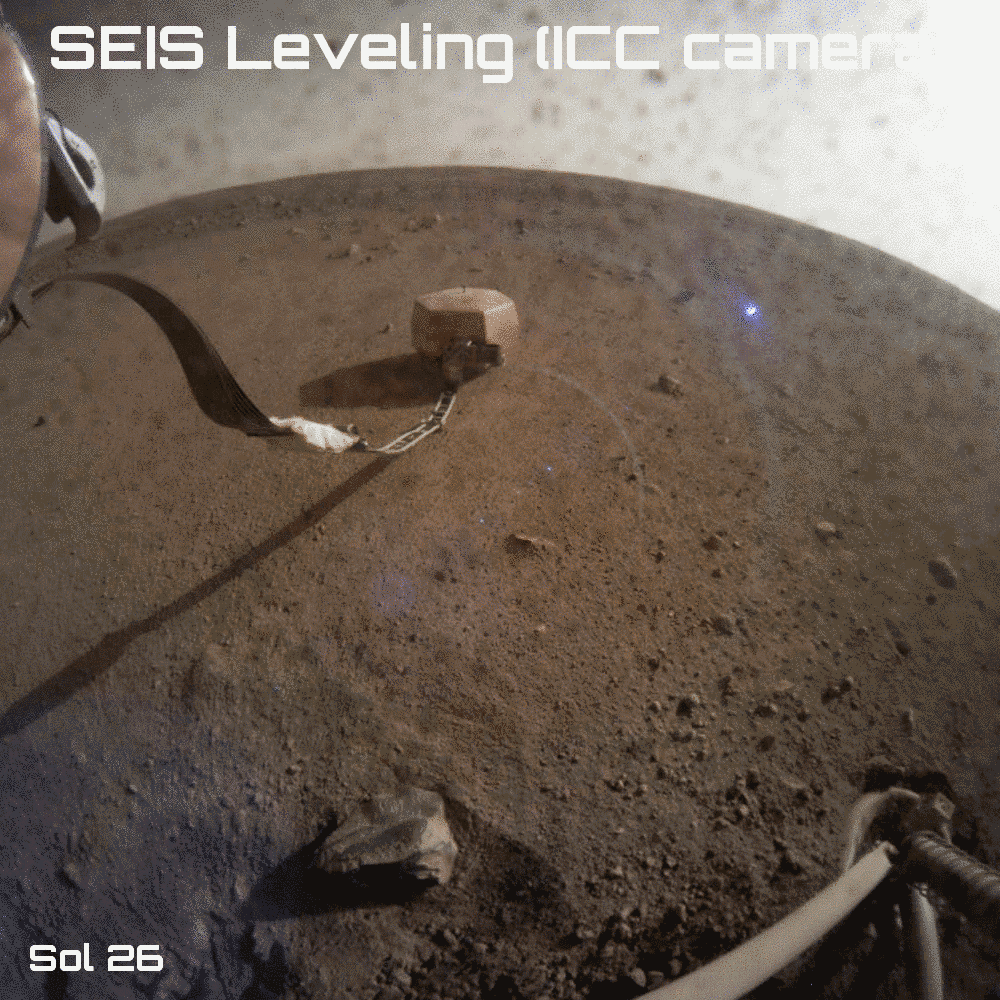
With the instrument level, they could “recenter the VBBs.” What’s that, and why is it important? “VBB” stands for “Very Broad Band” sensors in the seismometer. The seismometer has 3 VBB sensors in addition to the 3 short-period sensors. The VBBs are pendulums mounted on pivots that are as nearly frictionless as possible. When the ground moves, it sets the pendulums in motion as well. But the motions they’re seeking to detect are incredibly small, so small that to have any hope of detection, the VBBs have to operate in a vacuum and perfectly level.
The VBBs were the biggest headache for the InSight development effort. The failure of the vacuum chamber development is what led to InSight’s costly launch delay, but the VBBs were tricky bits of hardware even before that problem. “It was a hard road to get to where we had those wideband sensors to the point where they were working, and we could trust them,” Bruce said. I always had this worry in the back of my mind that we would get to Mars and they wouldn’t work.”
To make them work on Mars, the team has to command the VBBs to center their pendulums, allowing them to swing freely with ground motion.
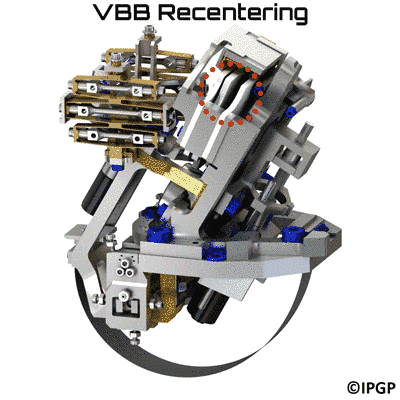
The command executed on 31 December (sol 34), but the team didn’t receive the resulting data until early in the morning of 2 January, Bruce told me. “We finally got vibrational data back from all 3 of the VBBs. To see that data coming back, and analysis showed it was performing just like we expected and hoped, that’s when I went home and decided to celebrate.” The SEIS team said:
L'arrivée des premières données au cours du sol suivant (sol 36, 2 janvier 2019) à 8h21 a été accueillie par des salves nourries d'applaudissements, l'équipe s'étant réunie pour l'occasion devant l'écran principal de la salle d'opérations de SEIS au Jet Propulsion Laboratory
With some help from Google translate:
On New Year's Day, in the course of sol 35, the balancing motor of the three VBB pendulums was activated on Mars, to place the moving part of the sensor in its central equilibrium position. The arrival of the first data on the next sol (sol 36, 2 January 2019) at 8:21 was greeted by bursts of applause, the team having gathered for the occasion in front of the main screen of the SEIS operating room at the Jet Propulsion Laboratory.
Having confirmed that the sensors are operating properly, the team decentered them, parking them for the next steps in setting up the experiment. SEIS is connected to the spacecraft with a ribbonlike tether. With Mars’ widely varying temperatures, that tether can move a lot overnight:
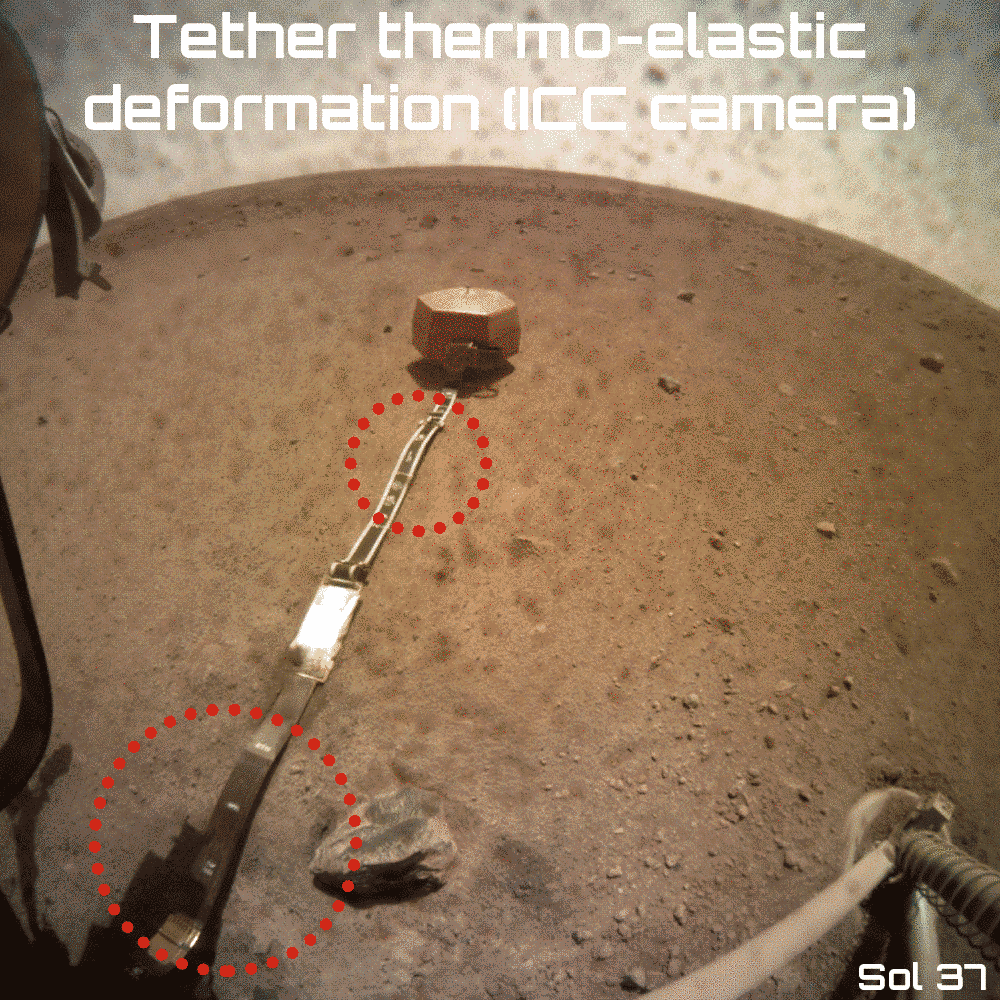
Such large motions of the tether can be transmitted to the SEIS sensors, swamping them with spacecraft-generated noise. So the team is spending weeks to do cable management, isolating the instrument as much as possible from motions of the tether. The first step was to dump the rest of the tether on the ground, which they did on sol 37.
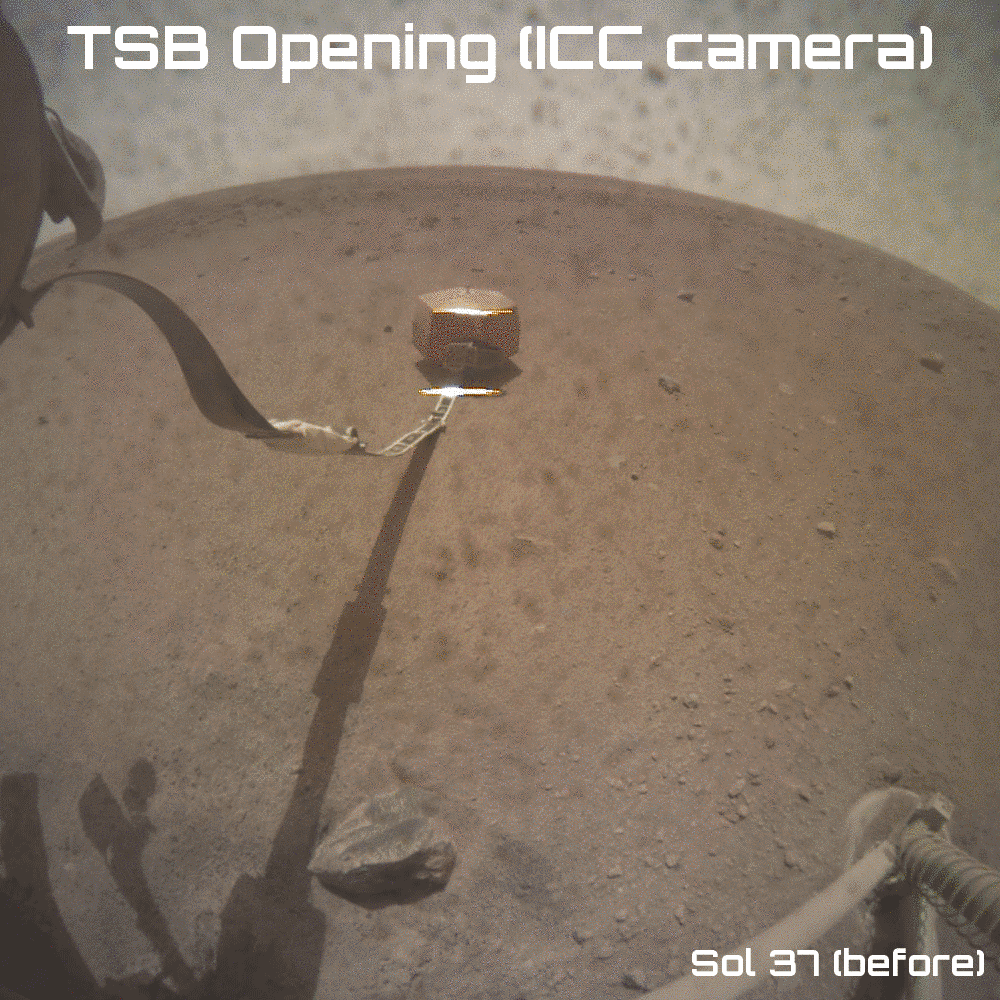
So now the lander isn’t tugging on the tether at all. But still, thermal expansion and contraction of the tether can tug on SEIS. So the next step was to open up the load shunt assembly, an element on SEIS that I explained in my previous post. Opening the load shunt assembly involved firing a “frangibolt,” which is a bolt that provides a permanent attachment until you apply current to it, which causes it to break. As you can see at 2:10 in this demo video, opening a frangibolt is a good jolt to your hardware, and jolts are enemies of seismometers. "That was actually a concerning operation -- we'd tested it, but it's one of the sharpest blows the SEIS gets over its lifetime, so we were concerned watching it, but that went off without a hitch. We recentered the VBBs, and found they were working fine."
The animation below shows the before and after condition of the firing of the frangibolt on the load shunt assembly.
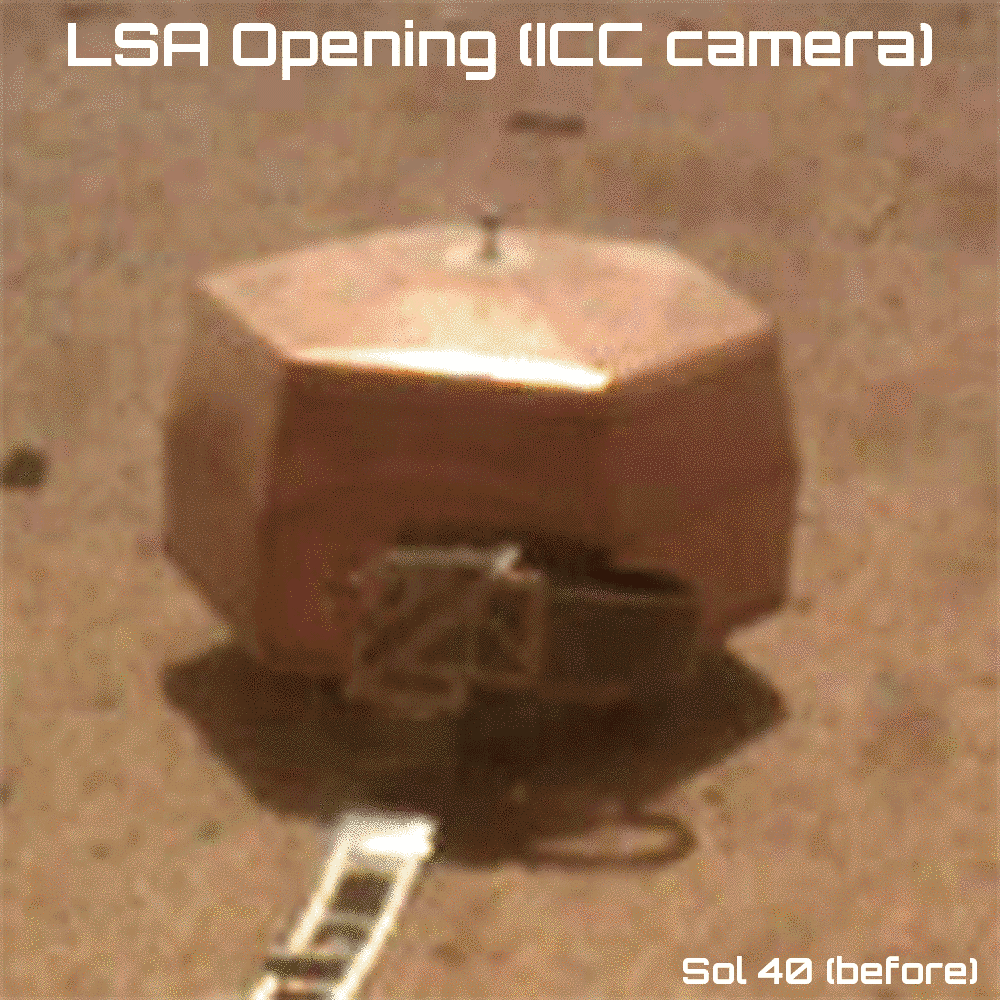
The next step was is “leveling low.” The SEIS team had leveled their instrument, but to make its coupling to Mars as tight as possible, they want the instrument as close to Mars as possible. The 3 leveling legs were all close to the midpoints of their ranges of motion. They will command SEIS to lower itself on all 3 legs, bringing it as close to the ground as possible, and then re-level it.
The load shunt assembly is now open, but the outer bit is still leaning on SEIS, so it can still impart motions from the tether to SEIS. The team will need to pull on the tether a little bit in order to open up the load shunt assembly more. The team has been practicing in the testbed to open up the load shunt assembly by tugging on a part of the tether using the scoop on the robotic arm.

They have to be careful, because they want to open up the load shunt assembly enough for it to isolate SEIS from tether expansion and contraction, but not so much that it interferes with placement of the wind and thermal shield over the top of SEIS. The desirable amount of opening is between a few millimeters and a couple of centimeters, Bruce told me. Tugging on it is much easier than trying to shove it closed again. So they will just tug a little bit (possibly as early as Friday), and may need to run the operation one or two times more to have it placed just perfectly.
Once they've finished all this cable management, they will take a few sols to collect a set of seismic data without the wind and thermal shield, but only during the daytime, because the instrument will be too cold at night. Then, and only then, will they be able to place the shield over SEIS, and its setup will be complete. The way the timeline looked yesterday, that might happen around sol 54 (20 January), but it could be delayed for any number of reasons. Patience is a virtue with InSight!
In the meantime, enjoy my reaction to the design of the skirt on the wind and thermal shield.
Maybe SPACE PANTS pic.twitter.com/keEZWic6IG
— Emily Lakdawalla (@elakdawalla) January 9, 2019
The Time is Now.
As a Planetary Defender, you’re part of our mission to decrease the risk of Earth being hit by an asteroid or comet.
Donate Today

 Explore Worlds
Explore Worlds Find Life
Find Life Defend Earth
Defend Earth

